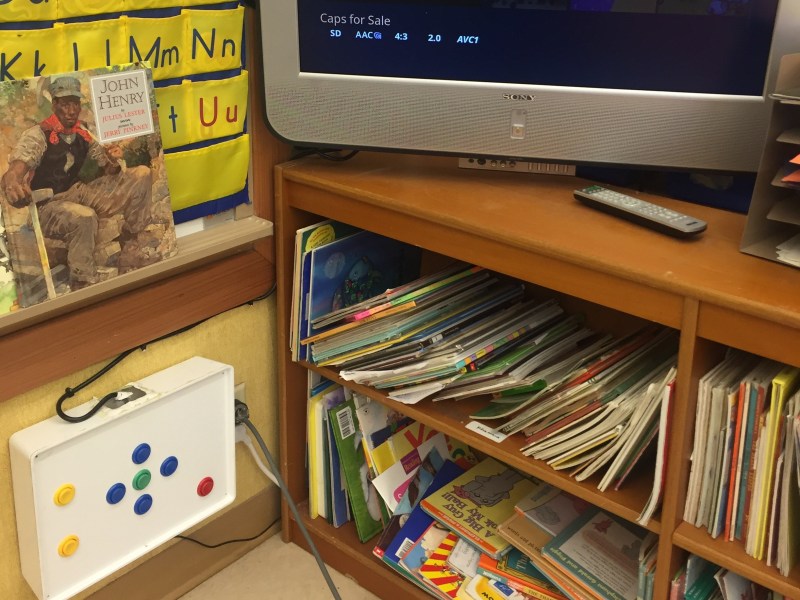[atomicthomas] is a dedicated teacher. One only has to look at the work he’s been putting into book readers for for the past sixteen years. With hardware like the Pi Zero threatening cheap computers just over the supply chain horizon, he’s begun to set his sights higher.
It all started with headphones and audio tapes. For all of us who got to use tapes and school headphones, we know the flaws with this plan. Nothing lasted the sticky and violent hands of children for long. When video recordings of book became available, DVD players suffered similar fates.
So, he began to rip his tapes and DVDs to his computer. However, the mouse has a warning about small parts on it for a reason, and didn’t last long either. So, he built a computer with arcade buttons and a Raspberry Pi. This one ran a heavily simplified version of a media manager and worked well. Even the special needs children had no problem navigating. A second exploration with an iMac and a Nintendo controller worked even better. Apparently all five year olds instinctively understand how to use a Nintendo controller.
Using the user test data, in his most recent iteration he’s working on a sub-twenty-dollar reading computer in a Nintendo controller. It’s not the most technically in depth hack we’ve ever covered, but it certainly ranks up there for harsh environments.




















builds super safe computer with no small parts, mounts it right next to the power outlet. genius!
Hey don’t mock this hack, if he can build something that can stand up to those viscous, snotty (as in little snot machine) monsters he’s a good hacker. I remember a story of an APC being put on display by the military and them letting kids climb all over it, the kids broke it!
Caps for sale hm? How much for an Archon?
3b, there’s a hefty bad joke markup.
Great build, making it look like a game is probably a good tactic.
I wonder how up to date the research is, it seems more and more kids are getting introduced to computing and gaming in a mobile (touchscreen) environment first. Touchscreen usage seems to be so natural to a kid, whereas I even at 24 consider touch a bad emulation of what I learned on (keyboard and mouse).
With me trying to guess at what glass stroke gesture or sequence of pokes the latest UX expert felt was the most natural way to implement the action I’m trying to achieve, instead it will be almost instinctive to a child that learned in touch first.
With the modern equivalent of sitting a kid down in front of the TV being hand the kid a tablet. I wonder if that’s not the interface that would be best here. If not now then in the next few years!
Amazon makes a tablet which they’ll replace if the kid manages to break IIRC. It looks like they’ve got the balance right between ruggedness and low cost for painless consumerism one-day-delivery replacement.